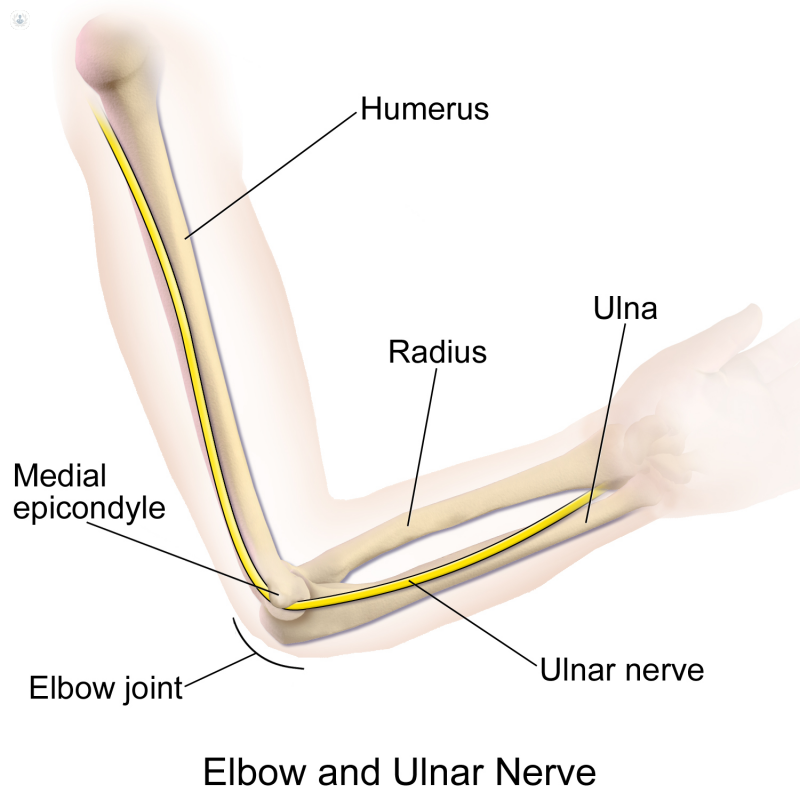



What is cubital tunnel syndrome?
Cubital tunnel syndrome (a form of ulnar nerve entrapment or ulnar neuropathy) is a condition in which the ulnar nerve becomes trapped or compressed. This nerve runs from your neck, through the elbow, to your hand, connecting to the little finger and half of the ring finger. It is the largest nerve in the body unprotected by muscle or bone, and due to its relative exposure, it is easy to bump, which may send a strange sensation like an electric shock down your arm (commonly referred to as “hitting your funny bone”). Unfortunately, it is also easy to injure.
There are several places where the ulnar nerve can become trapped and compressed, such as the collarbone and wrist, but the most common place is at the elbow. This is cubital tunnel syndrome.
Cubital tunnel may not be as well-known as carpal tunnel, but it is, in fact, the second most common peripheral nerve entrapment syndrome, and can cause the patient severe discomfort.
What are the symptoms of cubital tunnel syndrome?
Cubital tunnel can cause the following symptoms:

What causes cubital tunnel?
It is often difficult or impossible to pinpoint the exact cause of cases of cubital tunnel syndrome, but there are several things that can put pressure on it:
Prior fractures and dislocations, arthritis, swellings, and cysts around the elbow can all also be risk factors.
What is the treatment for cubital tunnel syndrome?
Cubital tunnel can often be managed conservatively, with physical therapies, such as:
In some cases, if the pressure on the nerve does not release via other methods, surgery may be required. There are different operations, ranging from simply releasing the source of the pressure to decompress the ulnar nerve to shifting the nerve within the elbow. Most patients respond to surgical intervention, though it is usually a last resort. Full recovery of hand and wrist strength can take several months, and physical rehabilitation may be necessary.
As with any treatment, the doctor will discuss and decide the best course of action for each individual case.